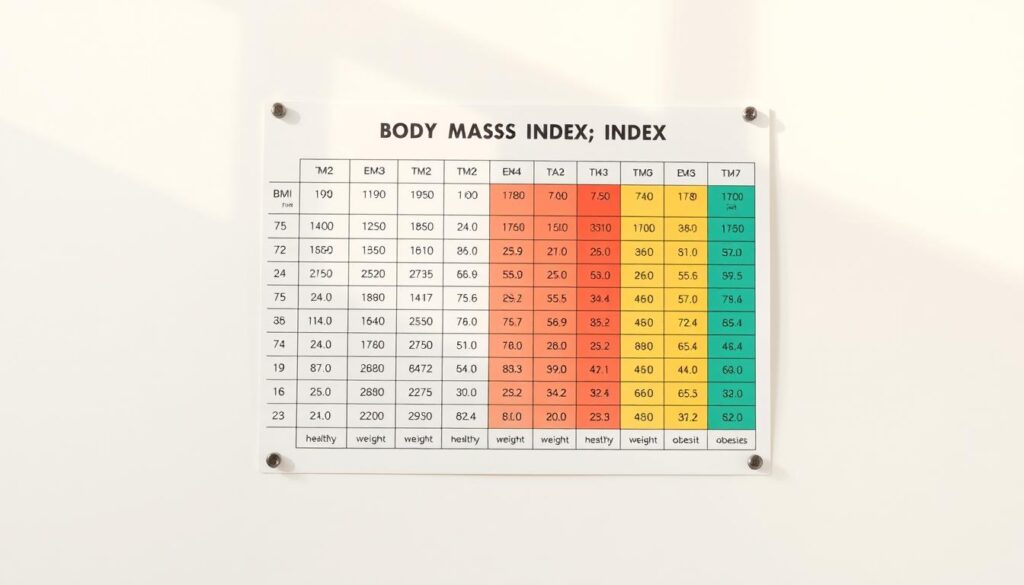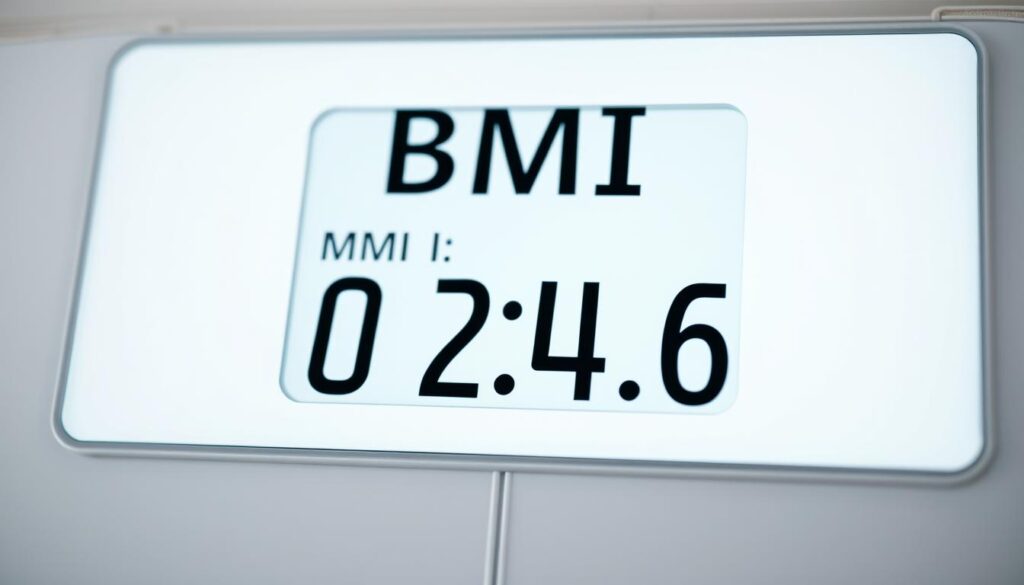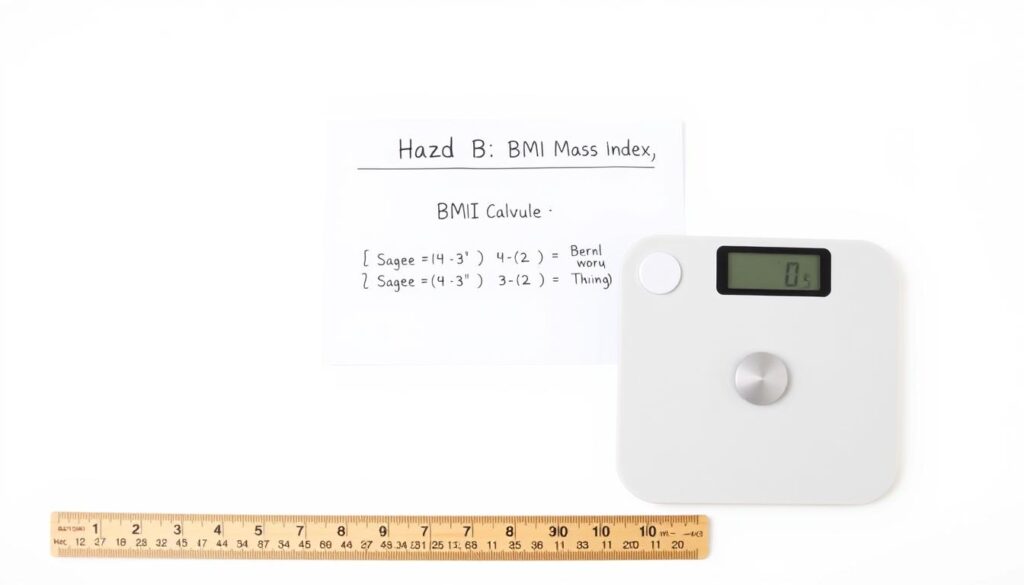Is your weight truly a reliable indicator of your health? Many people assume stepping on a scale tells the whole story, but body mass index (BMI) offers a more complete picture of how your height and weight interact. Our BMI calculator designed for pounds and simplifies this process, using the trusted formula: (weight in lbs ÷ height² in inches) × 703.
This tool helps you interpret results through standardized charts endorsed by the Centers for Disease Control and Prevention. While BMI doesn’t directly measure body fat, it’s widely used to identify potential health risks linked to being underweight or overweight. For instance, a result between 18.5–24.9 typically falls within the healthy weight range.
We’ll walk you through real-world examples later, showing how muscle mass, age, and activity levels influence interpretations. You’ll also learn why organizations like the CDC emphasize BMI as a starting point for health conversations rather than a final diagnosis.
Key Takeaways
- BMI evaluates body weight relative to height using a simple formula
- Our calculator eliminates conversion hassles for U.S. measurements
- Results align with CDC/WHO standards for consistency
- The 18.5–24.9 range indicates lower health risks for most adults
- Later sections explore how to apply this data to your lifestyle
Understanding Body Mass Index (BMI)
Health assessments often overlook a critical factor: how your weight relates to your height. The body mass index measures this relationship through a simple formula developed in the 1830s. Today, organizations like the CDC and WHO use it to screen for potential health concerns linked to body composition.
What This Measurement Tells Us
This ratio helps identify whether a person’s body weight falls within ranges associated with lower health risks. Research shows those outside the 18.5–24.9 range face higher chances of developing heart disease or type 2 diabetes. However, it doesn’t account for muscle mass or fat distribution, which we’ll explore later.
Standardized Health Categories
Major health groups classify results into four groups:
| Range | Category | Health Implications |
|---|---|---|
| Below 18.5 | Underweight | Nutritional deficiencies risk |
| 18.5–24.9 | Healthy weight | Lowest risk level |
| 25–29.9 | Overweight | Moderate risk |
| 30+ | Obese | High risk |
These thresholds help professionals quickly assess potential issues. While not perfect, this tool offers a consistent starting point for millions. Later sections will explain how to apply these ranges using measurements in everyday units.
Using a BMI calculator with pounds and inches
Accurate health evaluations begin with measurements you use daily. Most Americans instinctively track their weight in pounds and height in inches, making these units the natural choice for personal assessments. Our tool eliminates the frustration of metric conversions by working with the numbers you already have.
Why We Prefer US Units for Calculations
Consider someone who weighs 184 pounds and stands 70 inches tall. Using our system, they’d divide 184 by 4,900 (70²), then multiply by 703 – no extra math required. This approach reduces errors that often occur when converting kilograms to pounds or centimeters to feet.
Healthcare providers nationwide use these standards because they align with common household scales and tape measures. You’re more likely to recall your exact weight and height in familiar units, creating reliable data for analysis.
Our solution automatically applies the 703 multiplier from the official formula, ensuring precision without manual calculations. This matters because even small rounding mistakes can shift results between categories. Later examples will show how using consistent measurements helps track changes over time.
By focusing on US units, we help users avoid confusion and focus on what matters – understanding their health profile. You’ll find this method particularly helpful when comparing your results to national averages or medical guidelines.
Step-by-Step Guide to Calculating BMI
Personal health metrics become meaningful when measured correctly. Let’s break down the process using measurements you already track daily.
How to Calculate BMI in US Units
Follow these steps for precise results:
- Record your weight in pounds using a calibrated scale
- Measure height in inches without shoes (1 foot = 12 inches)
- Square your height measurement (height × height)
- Divide weight by the squared height number
- Multiply the result by 703
For a person weighing 184 pounds at 70 inches tall:
(184 ÷ 4900) × 703 = 26.4
Examples and Conversion Tips
If you have metric measurements, convert them first:
- Kilograms to pounds: Multiply by 2.205
- Centimeters to inches: Divide by 2.54
A common mistake? Forgetting to square height. Measure twice to confirm numbers. Our online tool handles these calculations instantly, eliminating manual errors.
Remember that body composition affects results. Two people with identical scores might have different health profiles based on muscle mass distribution. Always pair your number with professional health assessments.
Interpreting BMI Results and Health Implications
Numbers tell stories, but not always the full narrative. Our BMI calculator with pounds and inches provides a snapshot of weight-to-height ratios, yet true health assessments require deeper analysis. Let’s explore what these numbers mean – and what they might miss.
Understanding Weight Categories
Standard classifications help identify potential concerns:
- Under 18.5: Increased likelihood of nutrient deficiencies
- 18.5–24.9: Lowest risks for chronic conditions
- 25–29.9: 33% higher heart disease risk (CDC)
- 30+: 80% greater type 2 diabetes probability
The World Health Organization notes these ranges apply differently across populations. Asian countries often use lower thresholds due to body composition variations.
When Numbers Mislead
Athletes might show high scores despite low body fat percentages. Older adults often lose muscle mass, potentially masking excess fat. The American Cancer Society emphasizes BMI can’t detect visceral fat – a key factor in disease development.
Children’s growth patterns require specialized charts. Teens with identical scores might have vastly different health profiles based on puberty timing and activity levels.
“BMI serves as a screening tool, not a diagnostic instrument”
Regional differences matter too. Singapore considers 23+ overweight, while the U.S. uses 25+. Always pair your result with waist measurements and bloodwork for accurate insights. Our tool offers a starting point – not the final word – in health evaluations.
Conclusion
Understanding your health begins with reliable measurements. Our tool simplifies evaluating weight-to-height ratios using units you already know – no conversions needed. By squaring height in inches and applying the 703 multiplier, you get insights aligned with global health standards.
The 18.5–24.9 range remains a practical benchmark for most adults. While this metric doesn’t measure muscle or fat distribution, it’s a valuable screening tool. Pair your result with waist measurements and professional advice for personalized insights.
We’ve designed our calculator to deliver instant clarity without complex math. For those ready to take actionable steps, these numbers become meaningful guideposts. Remember, health assessments evolve – track changes over time and adjust habits accordingly.
Try our tool today. Share your experience, and explore more resources to build a complete picture of wellness. Knowledge empowers better choices – start here, then keep growing.




